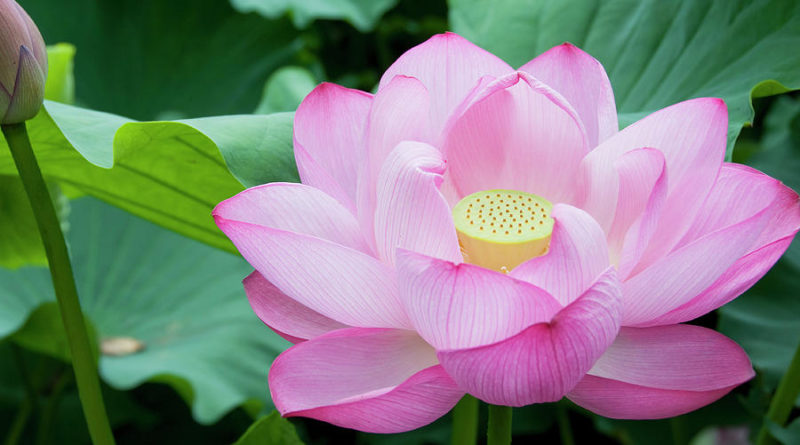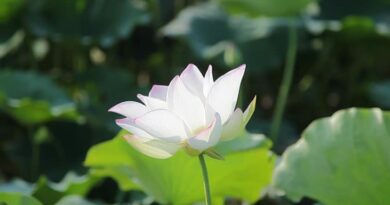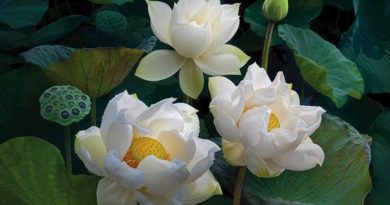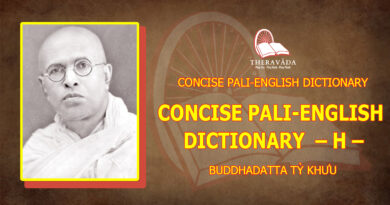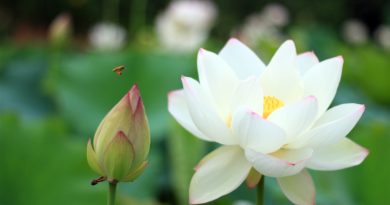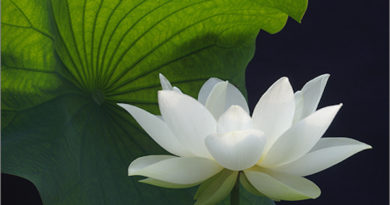Vinaya: Ownership And Administration Of Monasteries (eng)
VINAYA
OWNERSHIP AND ADMINISTRATION OF MONASTERIES
Vinaya is the name for the body of monastic rules and traditions that are binding on every Buddhist monk and nun. The Vinaya was established by the Buddha himself and is now preserved in written form, both in the ancient Indian languages and in English translation.
With so many new people having come into the Society in the last few years, many of our members and friends know very little about the rules of discipline of the monastic community. It is important for the lay community to have an understanding of these rules to ensure that we do not behave in any way which is offensive to the Sangha nor which could create difficulty for them. We have therefore decided to reprint a series of articles in this and forthcoming newsletters, which were written by Ajahn Brahm a number of years ago.
Ownership and Administration of Monasteries:
In the time of the Buddha, when a lay Buddhist offered lands of buildings, or money for such things, to establish a monastery, they would dedicate it to The Sangha of the Four Quarters Present and Yet to Come. The Sangha of the four quarters present and yet to come means ALL properly ordained monks and nuns. This would include all legitimate Buddhist monks and nuns, of all nationalities and sects. Today it would probably include most Chinese Mahayana monks and nuns (bhiksus and bhiksunis) but it would exclude some Tibetan lamas and most Zen roshis, the married ones at least! Thus the owners of the monastery are the worldwide and “timewide” community of monks and nuns.
The administrators of the monastery were those monks or nuns who lived there. They would meet regularly to make any decisions concerning their monastery and all such decisions had to be unanimous. But there are many rules of Vinaya which restrict what the resident monastics may do, in order to safeguard the monastery from corrupt monks. For example, they can’t decide to give Sangha property away (unless it is trifling), nor to divide up the goods among themselves, (then disrobing, selling up, and moving to Majorca!). The community at a monastery is bound to preserve and maintain in good order all Sangha property, holding it in trust for the monastics now and in the future.
In large monasteries, and some had thousands of monks and nuns, the community would delegate some of its responsibilities to competent monks and nuns. Thus there would be a monk in charge of allocating lodgings, and one in charge of building and maintenance. Ven. Maha Moggalana, one of the Buddha’s two chief monk disciples, was perhaps the most effective of the building monks. Once the Buddha commissioned him, with the assistance of 500 monks, to build the grandiose dwelling called the “Migaramatu Pasada” at Savatthi, with funds donated by the foremost female lay disciple Visakha. This monastic dwelling had two stories, each with 500 rooms pinnacled with gold! Because of Ven. Maha Moggalana’s psychic powers (they didn’t have cranes and bulldozers then) it took only 9 months to complete. It makes our efforts at Bodhinyana look puny.
In conclusion, in the time of the Buddha, the resident monastic community ran their monastery in every respect, maintaining it in good order for the benefit of all monks and nuns, now and in the future. And monastics did get involved in the building, although only now and again. The famous monasteries in ancient India, such as the Jeta Grove outside of Savatthi where the Buddha spent 19 rains retreats, were owned by the Sangha and run by the monks — there was no Buddhist Society of Savatthi! Then there was no need.
MONKS AND MONEY
This is the second article in the series about the Vinaya, the body of monastic rules and traditions binding on every Buddhist monk and nun. In this article I will be concerned with the controversial issue of a monk’s or nun’s dealings with money.
The issue has been controversial for over 2,000 years. Around 200 years after the Buddha’s final passing away, there arose a great quarrel in which “both endless disputations arose and of not one speech was the meaning clear” [1]. This dispute arose because a large community of monks were accepting money in defiance of the Vinaya. The proceedings of the dispute became known as the Second Council and it sowed the seed of the first great schism in the Buddhist world, which happened soon after.
Then, as now, there is no excuse for uncertainty on this point, for the Buddha’s own words make it plain…
On Monks and Money
Buddhist monks (bhikkhus) and nuns (bhikkhunis) are not allowed to accept money for themselves. Nor are they allowed to tell a trustworthy layperson to receive it on their behalf and keep it for them (e.g. keeping a personal bank account). Such practices are explicitly prohibited in the 18th rule of the section of Vinaya called Nissaggiya Pacittiya.
Nor may monks or nuns buy and sell things for themselves using money. This is prohibited by the 19th rule in the Nissaggiya Pacittiya.
Some people argue that these two rules refer only to gold and silver but such a view is indefensible. The Vinaya specifically states that these rules cover “whatever is used in business” [2], i.e. any medium of exchange.
Other people try to get around this rule by saying that it is only a minor rule, inapplicable to monastic life today. Indeed, the Buddha once did say that the Sangha may abolish the “lesser and minor” rules.
But is this rule a minor one?…
‘Monks, there are these four stains because of which the sun and moon glow not, shine not, blaze not. What are these four? Rain clouds… snow clouds… smoke and dust… and an eclipse. Even so, monks, there are these four stains because of which monks and priests glow not, shine not, blaze not. What are these four? Drinking alcohol… indulging in sexual intercourse… accepting gold or money… obtaining one’s requisites through a wrong mode of livelihood. These are the four stains, monks, because of which monks and priests glow not, shine not, blaze not.’ [3]
Obviously, the Buddha thought that the rule prohibiting the acceptance of gold or money was, indeed, a very important rule.
The non-acceptance of money has always been one of the fundamental observances of those who have left the world. Money is the measure of wealth and to most people material wealth is the goal of life. In the renunciation of money by monks and nuns, they emphatically demonstrate their complete rejection of worldly pursuits. At one stroke they set themselves significantly apart from the vast majority of people and thus become a constant reminder to all that a life based on the struggle to accumulate money is not the only way to live. Through giving up money they give up much of their power to manipulate the world and to satisfy their desires. Thus, as the Buddha once said when asked whether money was permissible to the monks and nuns:
‘Whoever agrees to gold or money, headman, also agrees to the five strands of sensual pleasure, and whoever agrees to the five strands of sensual pleasure, headman, you may take it for certain that this is not the way of a recluse, that this is not the way of a Buddhist monk.'[4]

